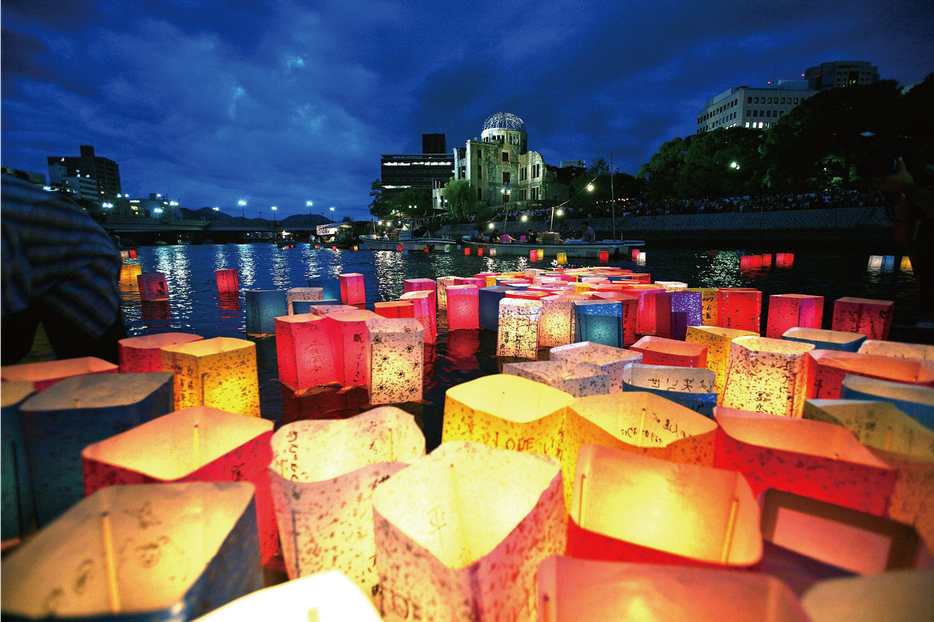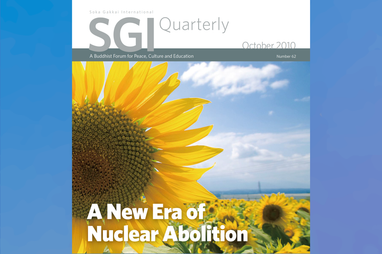SGI Quarterly

Commemorating A-bomb victims in Hiroshima. [Photo credit: © Getty Images]
The development, use and proliferation of nuclear weapons in the last century has shaped our age. When they were first used in World War II against the cities of Hiroshima and Nagasaki in Japan, the vast scale of destruction and suffering unleashed by a relatively small amount of fissile material was something without parallel in human history.
For the next four decades, the nuclear arms race held the world’s people hostage to the political imperatives of Cold War competition. At its height, tens of thousands of nuclear warheads were deployed by the rival blocs—said to be enough to destroy the world many times over. Even today, the real possibility of nuclear catastrophe continues to hang over humanity.
From the earliest stages of the rush to acquire these weapons of mass destruction, there was also a groundswell of grassroots movements attempting to halt their further development and spread. Some of the greatest figures of the age have lent their name to antinuclear campaigns. Bertrand Russell and Albert Einstein wrote, in 1955, in the wake of a hydrogen bomb test, ”Shall we put an end to the human race or shall we renounce war?”
After years of widespread tests, court cases and medical studies, the truly horrific, intergenerational health and environmental consequences of nuclear weapons can be more accurately assessed. But whereas chemical and biological weapons—as well as land mines and cluster munitions—have been banned under International Law as excessively cruel and indiscriminate, billions of dollars are still spent annually on the continued development, maintenance and deployment of nuclear weapons.
In September 2009, SGI President Daisaku Ikeda offered this analysis of the underlying challenge of nuclear abolition: ”The real enemy that we must confront is the ways of thinking that justify nuclear weapons; the readiness to annihilate others when they are seen as a threat or as a hindrance to the realization of our objectives.”
This issue of the SGI Quarterly brings together renowned antinuclear activists and experts who, from a wide range of perspectives, explore the dramatic developments of recent years and the next steps toward a world finally free of nuclear weapons.


